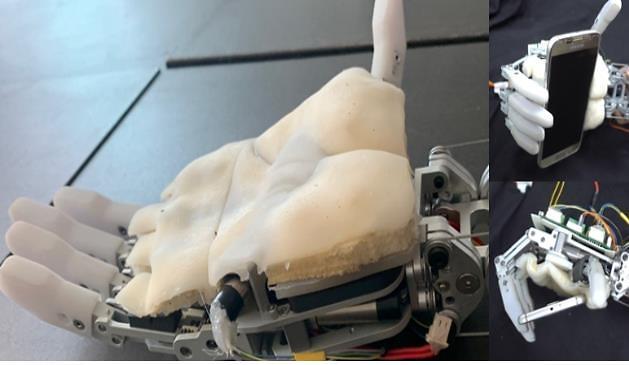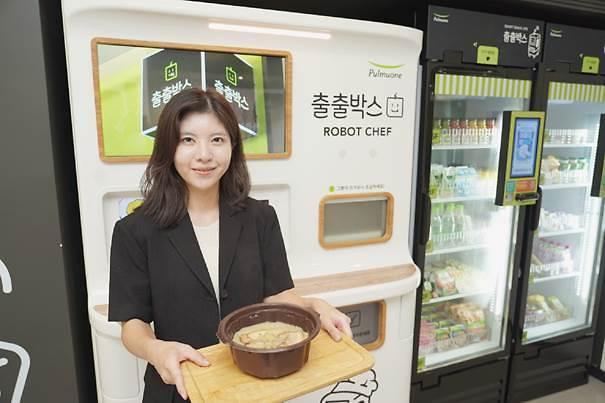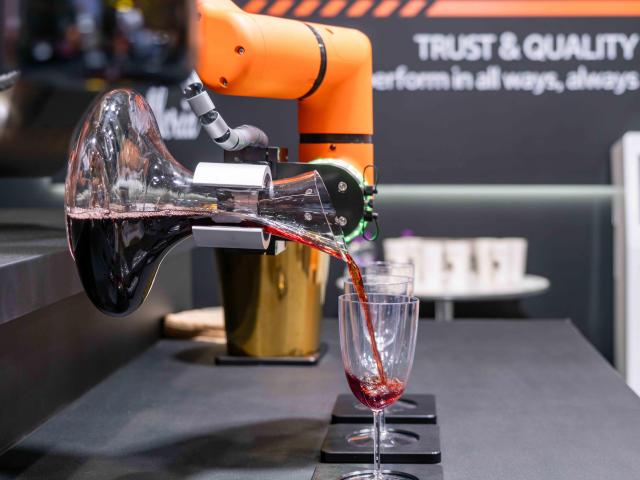
[Courtesy of the Korea Advanced Institute of Science & Technology ]
Human skin-like materials are widely used in robotic arms with manipulators or prosthetics to provide grip. However, if the skin material is soft, it would have a more stable grip but it decreases the manipulability of the robot hand. If the skin material is harder, manipulators would be more maneuverable but it would have a lesser grip.
The Korea Advanced Institute of Science & Technology (KAIST) said that its research team led by professors Park Hyung-soon and Kim Taek-soo has developed an elastic human-palm-inspired artificial skin material that mimics functions of human skin layers.
The researchers used a porous latex structure to represent soft fat tissues and tough latex walls to mimic septa walls that divide cavities or structures into small ones. The artificial skin wall holds the entire artificial structure in the tensile direction for tension and integrity. A thin layer of silicon was used as the cover sheet to provide a smooth surface and surface tension.
"We plan to develop a robotic hand with an optimized skin structure so that it can pick up tiny objects like small bolts or fragile objects such as eggs," Park said.
Through a series of tests, researchers found a five-finger robot manipulator covered with the artificial skin material had a firm enough grip to pick up a smartphone with four fingers, without using the thumb. Other manipulators that did not use the artificial skin had to use its thumb to get a firm grip. Because of structural characteristics, the artificial skin material can help robot manipulators maintain a firm grip on objects when the skin was twisted or stretched.
Cooperative robots, also known as cobots, are gradually being adopted at factories and small-sized workshops to work alongside humans in close proximity using manipulators to operate devices and pick up objects. The global market for cobots is expected to reach $10.1 billion by 2025, according to market research firm Grand View Research.
Because their robot hands lack delicate controls and firm grip, cobots are mainly assigned to simple jobs such as lifting up and sorting parcel boxes or placing products that come out of production lines.




